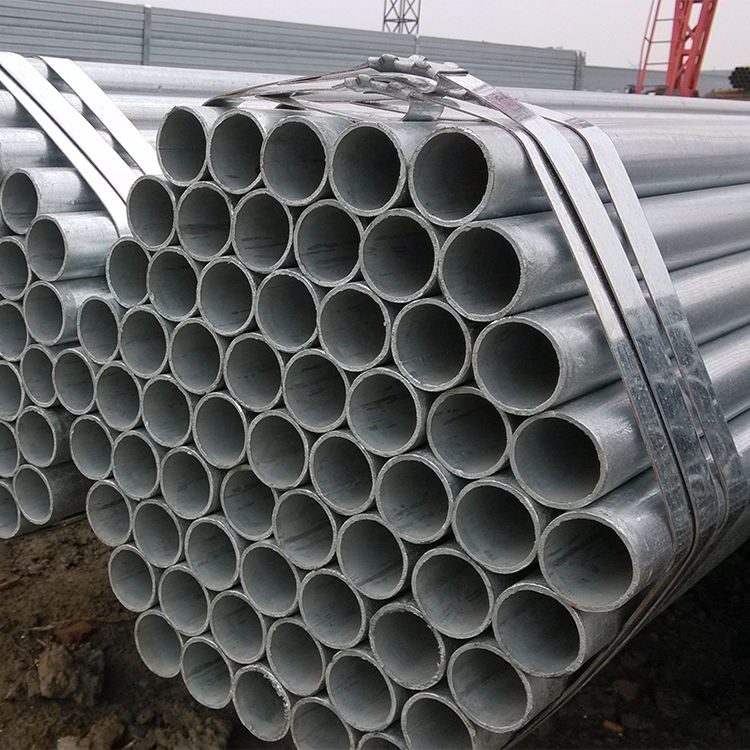When it comes to hot dipped galvanized steel pipe, the process of hot-dip galvanizing results in a metallurgical bond between zinc and steel with a series of distinct iron-zinc alloys. A typical hot-dip galvanizing line operates as follows:
◆Steel is cleaned using a caustic solution. This removes oil/grease, dirt, and paint.
◆The caustic cleaning solution is rinsed off.
◆The steel is pickled in an acidic solution to remove mill scale.
◆The pickling solution is rinsed off.
◆A flux, often zinc ammonium chloride is applied to the steel to inhibit oxidation of the cleaned surface upon exposure to air. The flux is allowed to dry on the steel and aids in the process of the liquid zinc wetting and adhering to the steel.
◆The steel is dipped into the molten zinc bath and held there until the temperature of the steel equilibrates with that of the bath.

Technically, galvanization is a process of coating iron and steel with a layer of zinc by immersing the metal in a bath of molten zinc at a temperature of around 840 °F (449 °C). When exposed to the atmosphere, the pure zinc (Zn) reacts with oxygen (O2) to form zinc oxide (ZnO), which further reacts with carbon dioxide (CO2) to form zinc carbonate (ZnCO3), a usually dull grey, fairly strong material that protects the steel underneath from further corrosion in many circumstances. Generally, hot dipped galvanized pipe has higher steel pipe price than some other ordinary types of pipe in use due to its high manufacturing cost in the market.
For the practical applications, like other corrosion protection systems, galvanizing mainly protects steel products by acting as a barrier between steel and the atmosphere. However, zinc is a more electronegative metal in comparison to steel. This is a unique characteristic for galvanizing. Specifically, when a galvanized coating is damaged and the steel product is exposed to the atmosphere, zinc can continue to protect steel through galvanic corrosion. Besides, due to its durability and anti-corrosive properties, most of cold rolled steel pipes can be recycled and reused, which to some degree save a lot of money during the post maintenance work.
With the layer of protection, pipes can be used in outdoor areas, and can withstand the harm from some of the environmental effects. Testing and studies have revealed that the average life expectancy for galvanized steel used as a typical structure material is well beyond 50 years in a rural environment and 20-25 years or more in an extreme urban or coastal setting. In that regard, contractors can confidently use this product in project. As a professional steel pipe manufacturer in China, we are committed to manufacturing various types of steel pipe for your projects. For more information, you can contact us anytime.
